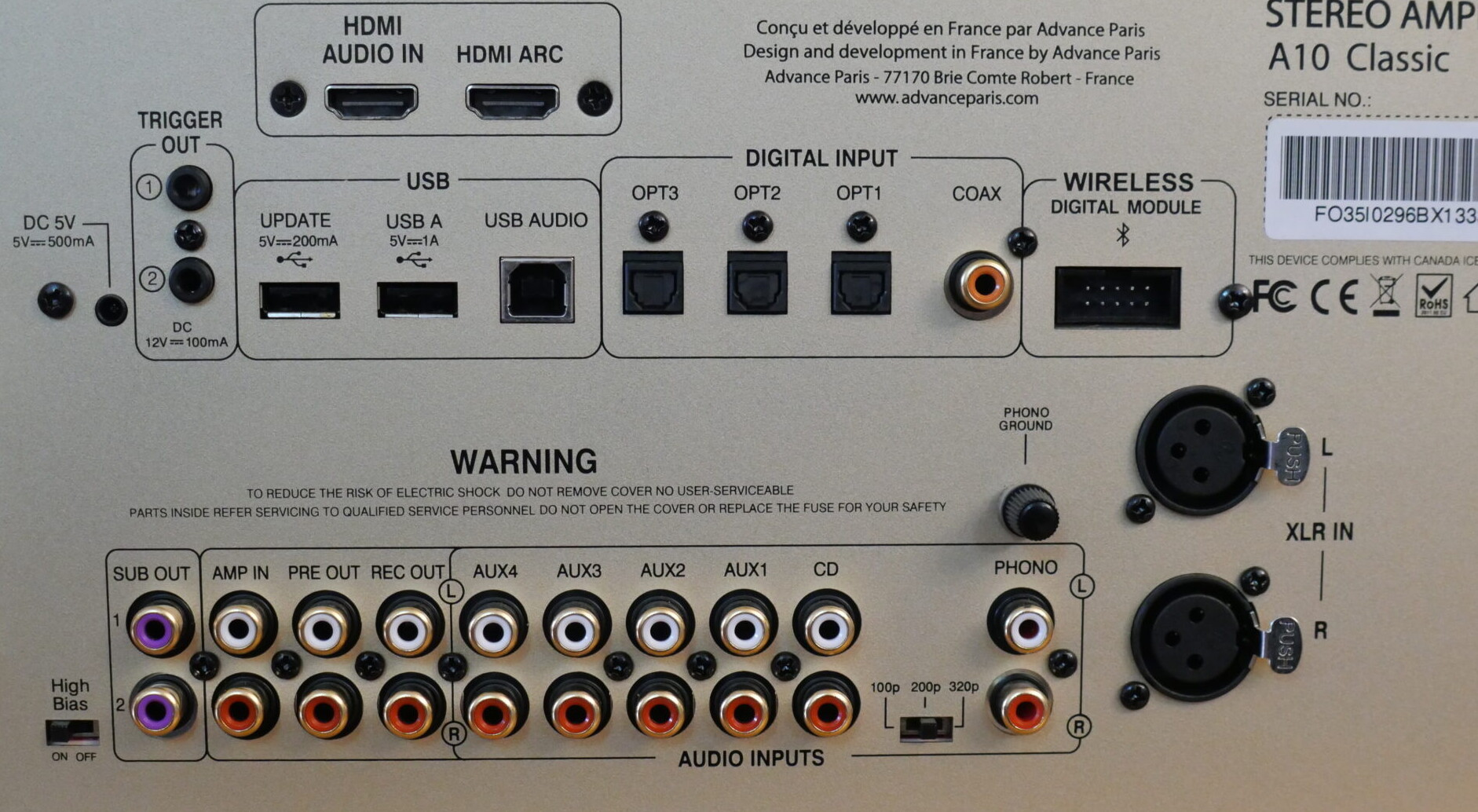
It is interesting to me that the retro vibe of the A10 Classic extends well-beyond the tall fascia and VUmeters. Just look at both the facility count and the facilities themselves. This is about as far from hair-shirt audio design as you can get. There are more analogue and digital inputs than you could possibly use, covering every conceivable, mainstream source. Tone controls might be considered rather infra-dig, but make sense of a situation in which a multi-source, multi-media, multi-user system has to share space with conflicting demands. Not everyone has total freedom over speaker placement and these tone controls are at least by-passable. Speaker switching? That dropped off the essential feature list decades ago – but again, with the resurgence in distributed music systems, it’s not a stupid idea…
So, the A10 Classic incorporates enough connectivity to sit at the centre of a modern, multi-media system, enough power to drive a range of different speakers, the option to add streaming and wireless replay and enough style and substance to convince you that you got what you paid for. But how does it sound?
Going nowhere?
The question with any product as outwardly impressive yet affordable as the A10 Classic is, how much is ‘show’ and how much is ‘go’? Well, straight off the bat let’s make it clear that there’s far more to the A10 than just a pretty fascia. I hooked it up with a variety of ancillaries, including the Heed Obelisk DT CD transport (which offered a near perfect aesthetic match), turntables from Telefunken (a vintage CS20 direct-drive) and VPI (the Classic 4) and a standalone streamer. Speakers were the Living Voice R25 and, to provide a sterner test of driving capability and low-frequency control, the Vienna Acoustics Beethoven Concert Grand. The A10 never missed a beat, with a warm, solid sound, good separation, organisation and nice, natural tonality – all the building blocks for great musical performance. But three steps lifted that performance significantly:
Engaging the high-bias setting brought a surprising increase in fluidity and expressive range to the sound.
Using small bamboo blocks to by-pass the stock feet added a sense of precision and focus to the picture, as well as a crisper, more explicit sense of pace and timing.
Damping the chassis lid (I used a pair of HRS Nimbus footers, but there are plenty of less expensive – and visible – options available) opened out the sound and added additional colour and character to voices and instruments. I suspect that a strip of car body damping material applied to the underside of the lid, between the vents, would be just as beneficial without defacing the amp’s appearance.
With those steps taken, the A10 lost any lingering sense of polite reserve associated with its warm tonal balance, gaining a sense of drive and rhythmic snap. Playing Patti Smith’s Banga (Columbia/Sony Music 8697 22217) it captured the infectious dancability of ‘April Fool’ just as effortlessly as it mastered the measured melancholia of ‘After The Gold Rush’. The rolling weight of ‘This Is The Girl’ just kept rollin’, never becoming leaden or ponderous. Banga is a stern test of any system’s rhythmic flexibility and articulation, top to bottom balance and ability to scale dynamics. It’s a test the A10 passed with an almost contemptuous insouciance. Sure, it lacks the absolute resolution, separation, dynamic jump and intimacy of far more expensive rigs, but that ain’t the point. Everything has a place and everything’s in its place, so you don’t notice (and the amp doesn’t point out) what’s missing.

